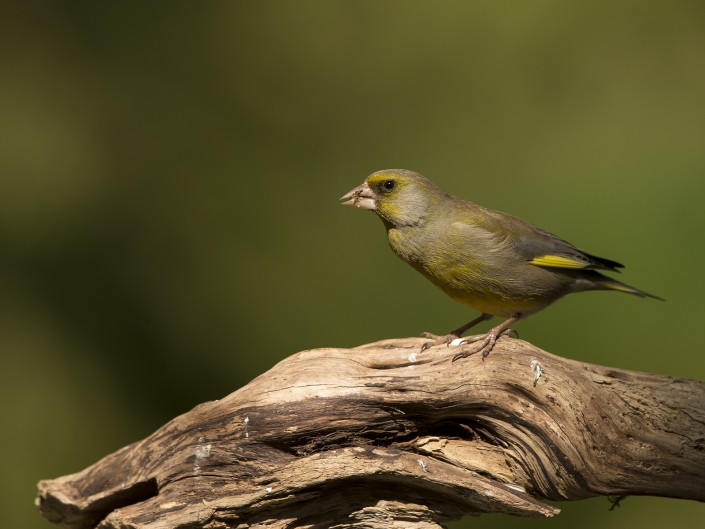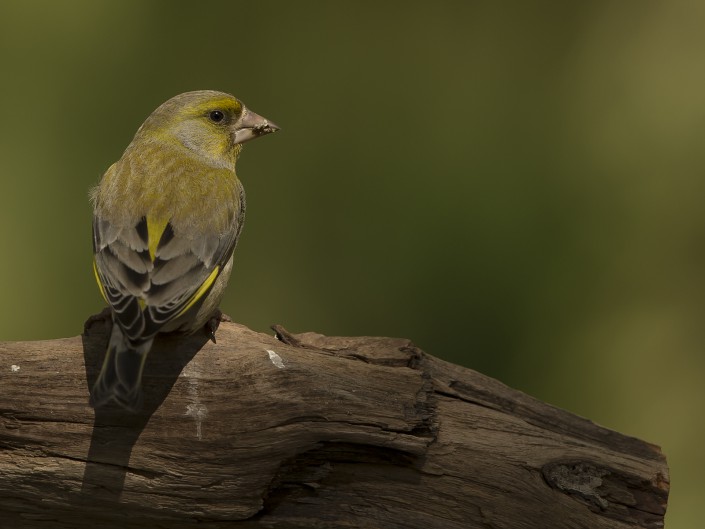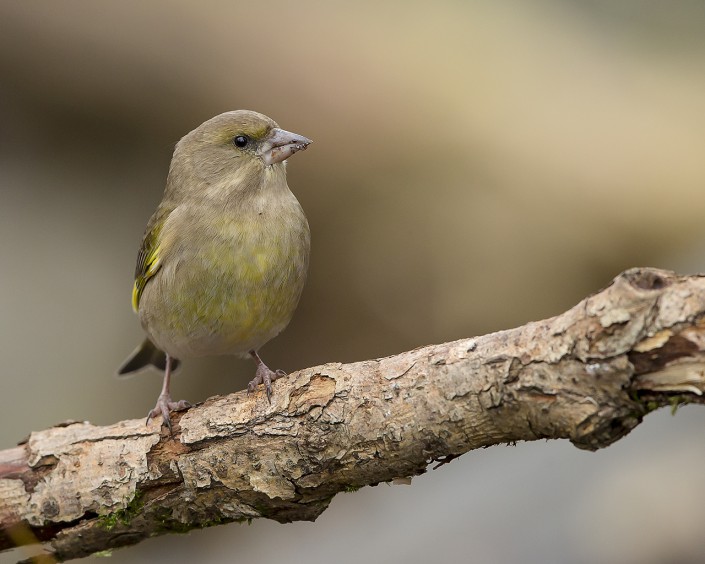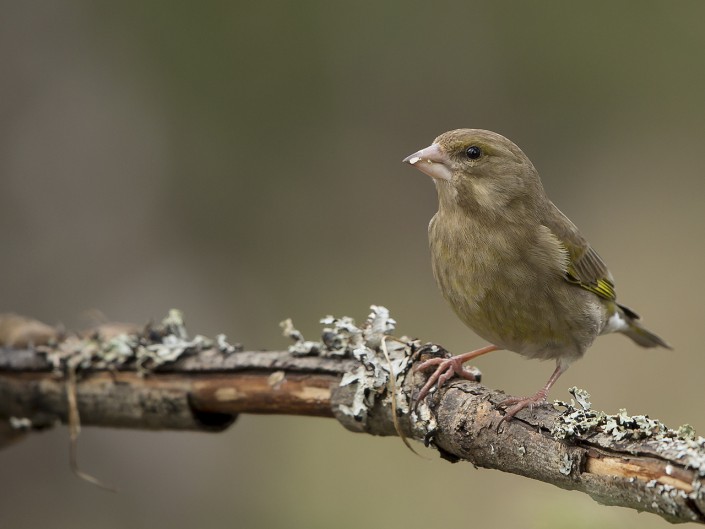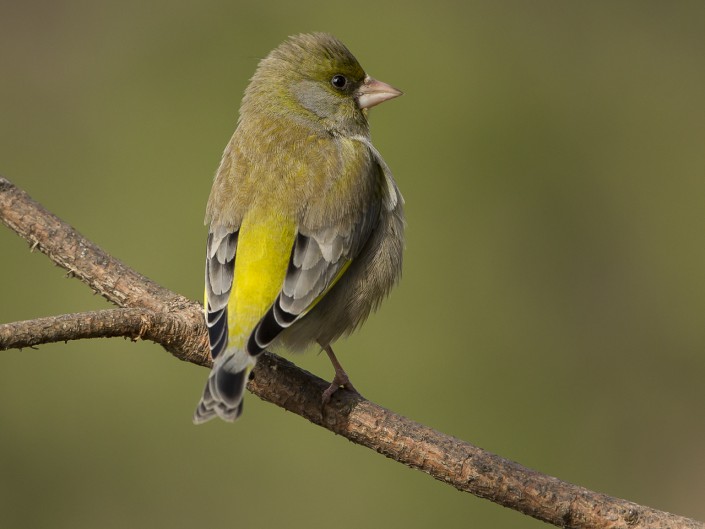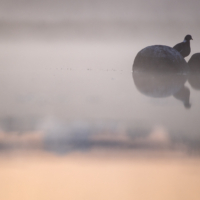This post is also available in: Swedish
European greenfinch – chloris chloris
European greenfinch – chloris chloris
The European greenfinch, or just greenfinch (Chloris chloris) is a small passerine bird in the finch family Fringillidae. This bird is widespread throughout Europe, north Africa and south west Asia. The greenfinch is 15 cm long with a wing span of 24.5 to 27.5 cm. It is similar in size and shape to a house sparrow, but is mainly green, with yellow in the wings and tail. The female and young birds are duller and have brown tones on the back. The bill is thick and conical. The song contains a lot of trilling twitters interspersed with wheezes, and the male has a “butterfly” display flight.
This bird is widespread throughout Europe, north Africa and south west Asia. It is mainly resident, but some northernmost populations migrate further south. The greenfinch has also been introduced into both Australia and New Zealand. In Malta it is considered a prestigious song bird which has been trapped for many years. It has been domesticated and many Maltese people breed them.
The greenfinch is 15 cm (5.9 in) long with a wing span of 24.5 to 27.5 cm (9.6 to 10.8 in). It is similar in size and shape to a house sparrow, but is mainly green, with yellow in the wings and tail. The female and young birds are duller and have brown tones on the back. The bill is thick and conical. The song contains a lot of trilling twitters interspersed with wheezes, and the male has a “butterfly” display flight. Breeding season occurs in spring, starting in the second half of March, until June, with fledging young in early July. Incubation lasts about 13-14 days, by the female. Male feeds her at the nest during this period. Chicks are covered with thick, long, greyish-white down at hatching. They are fed on insect larvae by both adults during the first days, and later, by frequent regurgitated yellowish past of seeds. They leave the nest about 13 days later but they are not able to fly. Usually, they fledge 16–18 days after hatching. This species produces two or three broods per year.
Listen to it
Recording by Harry Lehto





















